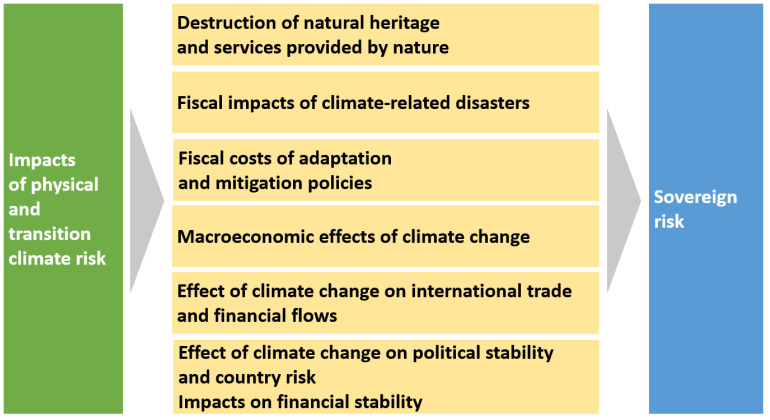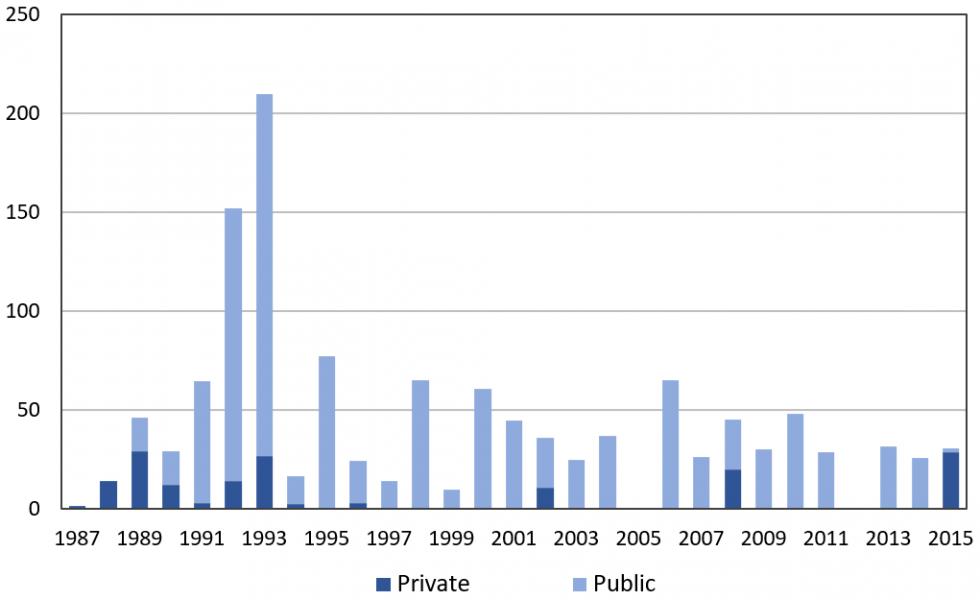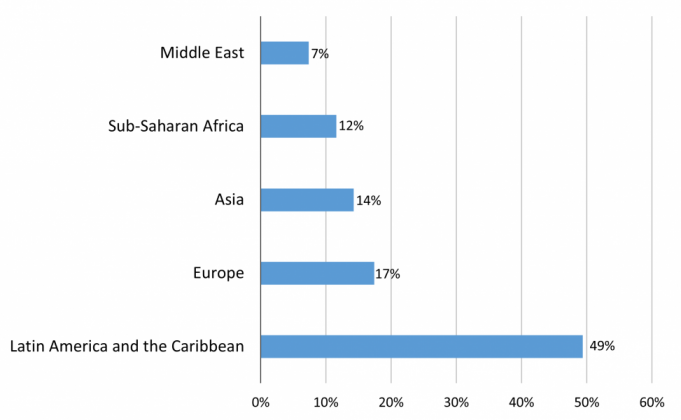References
IEA, International Energy Agency (2021). Financing Clean Energy Transitions in Emerging and Developing Economies, June.
World Bank (2021). International Debt Statistics 2021.
Caliari (A.) (2020). Linking Debt Relief and Sustainable Development: Lessons from Experience, coll. « Debt Relief for Green and Inclusive Recovery Project », background paper, No. 7, Heinrich Böll Foundation, Center for Sustainable Finance (SOAS, University of London) and Global Development Policy Center (Boston University), November.
Cassimon (D.), Prowse (M.) and Essers (D.) (2011). «The pitfalls and potential of debt‑for‑nature swaps: A US‑Indonesian case study», Global Environmental Change, Vol. 21, No. 1, February, p. 93‑102.
Unctad, United Nations Conference on Trade and Development (2021). “Debt relief and productive capacities key to recovery in middle-income countries”, June.
CEPR, Centre for Economic Policy Research (2022). Climate and Debt, coll. « Geneva Reports on the World Economy », No. 25, October.
De Bandt (O.), Jacolin (L.) and Lemaire (T.) (2021). « Climate Change in Developing Countries: Global Warming Effects, Transmission Channels and Adaptation Policies », Working Paper, No. 822, Banque de France, July.
Essers (D.) Cassimon (D.) and Prowse (M.) (2021). « Debt‑for‑climate swaps in the COVID‑19 era: Killing two birds with one stone? », Analysis and Policy Brief, No. 43, University of Antwerp, March.
IMF, International Monetary Fund (2021a). Fiscal Monitor. Strengthening the Credibility of Public Finance, October, p. 15 (box 1.2).
IMF (2021b). « The G20 common framework for debt treatments must be stepped up », IMF Blog, 2 December.
IMF (2022b). World Economic Outlook and Fiscal Monitor (Database), April.
IPCC, Intergovernmental Panel on Climate Change (2021). « Summary for policymakers », Climate Change 2021: The Physical Science Basis. Contribution of Working Group I to the Sixth Assessment Report of the Intergovernmental Panel on Climate Change, October.
IPBES, Intergovernmental Science-Policy Platform on Biodiversity and Ecosystem Services (2019). The global assessment report on biodiversity and ecosystem services, May.
Jayachandran (S.) et al. (2017) « Cash for carbon: A randomized trial of payments for ecosystem services to reduce deforestation », Science, Vol. 357, No. 6348, July, p. 267‑273.
Kraemer (M.) and Hartmann (J.) (1993). « Policy responses to tropical deforestation: Are debt‑for‑nature swaps appropriate? », The Journal of Environment & Development, Vol. 2, No. 2, Summer, p. 41‑65.
Lazard (2021). Debt‑for‑SDGs swaps in indebted countries: The right instrument to meet the funding gap? – A review of past implementation and challenges lying ahead, September.
Levrel (H.) (2020). Les compensations écologiques, Éditions La Découverte, coll. « Repères », No. 749, November.
Lovejoy (T. E.) and Nobre (C.) (2018). « Amazon Tipping Point », Science Advances, Vol. 4, No. 2, February.
NGFS, Central Banks and Supervisors Network for Greening the Financial System (2019). A call for action. Climate change as a source of financial risk, First comprehensive report, April.
NGFS and INSPIRE (2022). « Central banking and supervision in the biosphere: An agenda for action on biodiversity loss, financial risk and system stability. Final Report of the NGFS‑INSPIRE Study Group on Biodiversity and Financial Stability », NGFS Occasional Paper, March.
UN, United Nations (2002). Monterrey Consensus of the International Conference on Financing for Development, 18‑22 March, p. 17 (§ 49).
Persson (L.) et al. (2022). « Outside the safe operating space of the planetary boundary for novel entities », Environmental Science & Technology, No. 56(3), p. 1510‑1521, January.
Resor (J. P.) (1997). « Debt‑for‑nature swaps: A decade of experience and new directions for the future », unasylva, Vol. 48, FAO (Food and Agriculture Organization of the United Nations), January.
Ripple (W.) et al. (2017). « Extinction risk is most acute for the world’s largest and smallest vertebrates », PNAS (Proceedings of the National Academy of Sciences of the United States of America), Vol. 114, No. 10, September.
Sheikh (P. A.) (2018). Debt for Nature Initiatives and the Tropical Forest Conservation Act (TFCA): Status and Implementation, United Nations Congress, July.
Sommer (J. M.) et al. (2020). « The United States, bilateral debt‑for‑nature swaps, and forest loss: A cross‑national analysis », The Journal of Development Studies, Vol. 56, No. 4, p. 748‑764.
Steele (P.) and Patel (S.) (2020). « Tackling the triple crisis. Using debt swaps to address debt, climate and nature loss post‑COVID‑19 », Shaping Sustainable Markets Papers, International Institute for Environment and Development (IIED), September.
Stiglitz (J.) and Rashid (H.) (2020). « Averting catastrophic debt crises in developing countries. Extraordinary challenges call for extraordinary measures », CEPR Policy Insights, No. 104, Centre for Economic Policy Research, July.
Volz (U.) et al. (2020). Climate Change and Sovereign Risk, Center for Sustainable Finance (SOAS, University of London), Asian Development Bank Institute, World Wide Fund for Nature, Four Twenty Seven and INSPIRE, October.
Volz (U.) et al. (2021). Debt Relief for a Green and Inclusive Recovery: Securing Private‑Sector Participation and Creating Policy Space for Sustainable Development, coll. « Debt Relief for Green and Inclusive Recovery Project », Heinrich Böll Foundation, Center for Sustainable Finance (SOAS, University of London), Global Development Policy Center (Boston University), June.
Weder di Mauro (B.) (2021). « Debt for climate swaps make sense », PS Quarterly, Project Syndicate, December.
Yue (M.) and Nedopil Wang (C.) (2021). Debt‑for‑Nature Swaps: A Triple Win Solution for Debt Sustainability and Biodiversity Finance in the Belt and Road Initiative (BRI)?, IIGF Green BRI Center, January.
Zettelmeyer (J.) (2022). « Using debt‑for‑climate swaps to solve two crises at once », webinar, Boston University Global Development Policy Center, 13 January.








